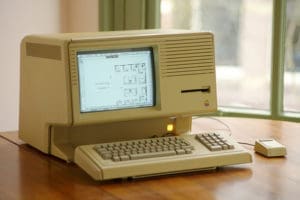 While everyone else was at the beach during the summer of 1979, Steve Jobs began work on—you guessed it—another product that would change the world. The Lisa, introduced to the marketplace in 1983, was Apple’s first foray into personal computers with mouse-controlled graphical user interfaces.
While everyone else was at the beach during the summer of 1979, Steve Jobs began work on—you guessed it—another product that would change the world. The Lisa, introduced to the marketplace in 1983, was Apple’s first foray into personal computers with mouse-controlled graphical user interfaces.
The Lisa chapter in tech history is chock-full of interesting tidbits. The story of Jobs’ visits to Xerox PARC in 1979, where he saw the potential of a mouse-controlled GUI, has reached almost mythological status, though some claim timeline discrepancies. The computer’s namesake was Jobs’ own daughter, with “Lisa” officially short for “Local Integrated Software Architecture.” (Inside Apple, the joke was it stood for “Lisa: Invented Stupid Acronym.”)
Lisa’s commercial failure
Despite the smooth stylings of this cheesy 1984 demo video, the Lisa was not commercially successful. Its $10,000 price tag, close to $25,000 in today’s money, was out of reach for most businesses, and its slow processor and custom disk drives were also detriments. But many of the Lisa’s innovations—icons, overlapping windows, and dropdown menus, to name a few—went on to live in the Macintosh and Microsoft Windows. (As Apple buffs know, Jobs was ousted from the Lisa project before launch but took charge of the Macintosh project.)
What’s particularly intriguing about the Lisa are the ideas that didn’t find other homes, like the idea of a document- rather than application-focused operating system. Instead of opening an application, a Lisa user tore off a sheet of “Lisa paper,” creating a file that opened in the appropriate application.
Who knows, though. Apple might just be waiting for the right time to launch a document-centric OS. The concept of Lisa’s “soft” shutdown, which launched an automatic sequence saving all open documents, didn’t reappear until OS X Lion in 2011.
Photo: Simon Claessen via Flickr.com. Used under CC 2.0 License.
